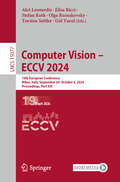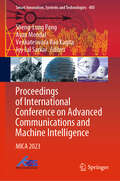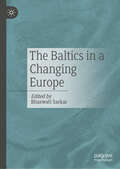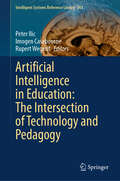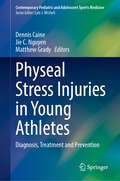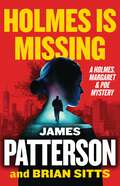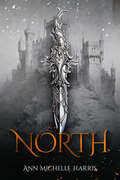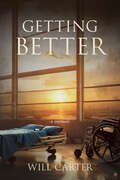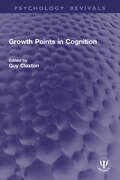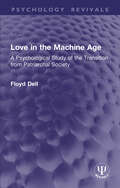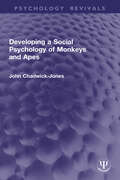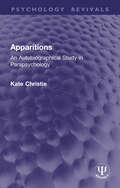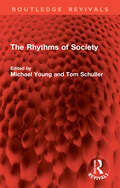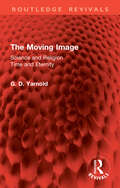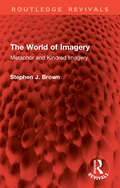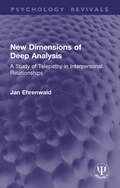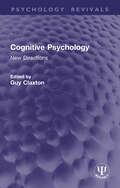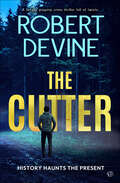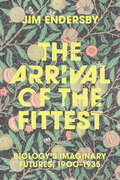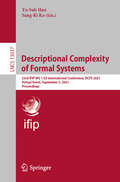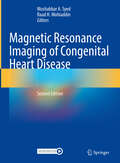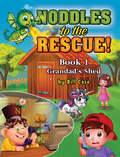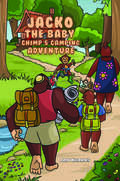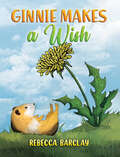- Table View
- List View
Computer Vision – ECCV 2024: 18th European Conference, Milan, Italy, September 29–October 4, 2024, Proceedings, Part XIX (Lecture Notes in Computer Science #15077)
by Stefan Roth Aleš Leonardis Elisa Ricci Torsten Sattler Olga Russakovsky Gül VarolThe multi-volume set of LNCS books with volume numbers 15059 up to 15147 constitutes the refereed proceedings of the 18th European Conference on Computer Vision, ECCV 2024, held in Milan, Italy, during September 29–October 4, 2024. The 2387 papers presented in these proceedings were carefully reviewed and selected from a total of 8585 submissions. The papers deal with topics such as computer vision; machine learning; deep neural networks; reinforcement learning; object recognition; image classification; image processing; object detection; semantic segmentation; human pose estimation; 3d reconstruction; stereo vision; computational photography; neural networks; image coding; image reconstruction; motion estimation.
Proceedings of International Conference on Advanced Communications and Machine Intelligence: MICA 2023 (Smart Innovation, Systems and Technologies #405)
by Sheng-Lung Peng Ayan Mondal Venkateswara Rao Kagita Joy Lal SarkarThis book presents high-quality, peer-reviewed papers from International Conference on Advanced Communications and Machine Intelligence (MICA 2023), hosted by National Institute of Technology Warangal, Telangana, India, during 30–31 October 2023. The book includes all areas of advanced communications and machine intelligence. The book is useful for academicians, scientists, researchers from industry, research scholars, and students working in these areas.
The Baltics in a Changing Europe
by Bhaswati SarkarThis edited volume brings together a series of papers on various facets of the three Baltic countries, Estonia, Latvia and Lithuania which have not attracted much intellectual attention outside Europe, especially in South Asia. The countries regained independence in 1991 following the disintegration of the Soviet Union. They sought to secure themselves by joining the EU, NATO and the Eurozone. They are robust democracies registering steady economic growth with improved living standards and are leading hubs in the field of Information Technology. However, for these small states bordering Russia the ongoing Russia-Ukraine war brings existential fears. This volume analyses how these states with substantial number of Russian minorities are recalibrating their policies in this changing geopolitical landscape of an assertive and aggressive Russia. It provides an in-depth understanding of the Baltic countries focusing on their security concerns, regional cooperation, gender and minority issues and bi-lateral relations with emerging powers China and India. The volume would be of immense value to scholars of International Relations, academics, journalists, researchers and policy makers.
Artificial Intelligence in Education: The Intersection of Technology and Pedagogy (Intelligent Systems Reference Library #261)
by Rupert Wegerif Peter Ilic Imogen CasebourneThis book offers a multidisciplinary perspective on the ways in which the careful integration of AI might enhance learning outcomes. By inviting dialogue between engineering (what is possible) and pedagogy (what might be desirable), the book offers a holistic view of AI's potential for education. Offering both case studies of practical implementation and pedagogically informed frameworks, it focuses on appropriately integrating technology for educational benefit, presenting a uniquely broad view. The contributors, who are both educators and technically proficient, bring insights into teaching and assessment approaches, research questions, and technological affordances or constraints. Essential for researchers, educators, and policymakers navigating the rapidly evolving educational technology landscape as AI becomes increasingly prevalent in every aspect of life.
Physeal Stress Injuries in Young Athletes: Diagnosis, Treatment and Prevention (Contemporary Pediatric and Adolescent Sports Medicine)
by Dennis Caine Jie C. Nguyen Matthew GradyParticipation in youth sports is increasingly popular and has important and wide-ranging health benefits. However, year-round involvement in youth sport involves high levels of repetitive movement which may foster an environment where overuse injuries are likely to occur. Of particular concern are physeal stress injuries (PSIs) which are unique to skeletally immature athletes and are becoming common in youth sports. These injuries may be associated with substantial injury burden, especially at advanced levels of training and competition. In extreme cases, PSIs can progress to produce skeletal growth disturbance, which may necessitate surgical intervention and correction. This book summarizes the status of our knowledge on the occurrence, underlying pathophysiologic mechanisms, diagnosis, treatment, and prevention of PSIs affecting children and adolescents involved in various sports. Physeal Stress Injuries in Young Athletes: Diagnosis, Treatment and Prevention is organized into three parts. Part I, Introduction opens with a chapter that provides a foundation and basic framework on bone growth for readers to better understand and anticipate potential complications and growth disturbance that can arise from PSIs. This is followed by two chapters that provide an overview of the two anatomically distinct types of PSIs – epiphyseal and apophyseal PSIs. In addition to providing a general sense of the occurrence and distribution of these injuries, these chapters also provide a novel framework for understanding the underlying pathophysiologic mechanisms of these injuries. Part II, Diagnosis and Treatment consists of 8 chapters covering common sites of epiphyseal and apophyseal PSIs, anatomically divided into those occurring at the shoulder, elbow, wrist, hand and fingers, spine, pelvis and hip, knee, ankle and foot. Each chapter follows a similar outline and provides detail on location-specific patterns of PSIs, available demographic and epidemiologic data, known or postulated injury mechanisms, underlying pathophysiologic mechanisms, typical clinical presentation, key diagnostic imaging findings, management, and factors that impact prognosis and outcome. Part III, Prevention consists of a chapter that begins with a discussion on risk factors common to epiphyseal and apophyseal PSIs. This is followed by a review of practical preventive measures that are generally applicable to patients diagnosed with PSI. Finally, the last section of this chapter takes a closer look and reviews evidence-based strategies designed to target prevention of specific PSIs at various anatomical locations. Primary care sports medicine physicians, urgent and emergency care physicians, orthopedic surgeons, physical and athletic therapists, and athletic trainers who provide care for pediatric athletes will find this book helpful in identifying and treating young athletes with physeal stress injuries, identifying knowledge gaps, and implementing appropriate preventive measures that can reduce future incidence and severity of these injuries. Sport governing bodies and coaches can also use the information gathered within this book to guide the development and optimization of injury prevention programs and to reduce underdiagnosis and undertreatment of physeal stress injuries.
Holmes Is Missing: Patterson's Most-Requested Sequel Ever (Holmes, Margaret & Poe #2)
by James Patterson Brian Sitts&“Best-selling author James Patterson populates his murder-mystery novels with cold-blooded killers and smart detectives&” (USA Today). In Holmes is Missing, PI Brendan Holmes has committed the perfect crime—he&’s made himself disappear. Success has come quickly to Holmes, Marple & Poe Investigations. The New York City agency led by three detectives—Brendan Holmes, &“the brain,&” Margaret Marple, &“the eyes,&” and Auguste Poe, the &“muscle&”—with famous names and mysterious pasts is one major case away from cementing its professional reputation. But as a series of child abductions tests the PIs&’ legendary skills, the cerebral Holmes&’s absence leaves a gaping hole in the agency roster. Only by closing ranks and solving the mystery within can they recover all that&’s been lost. <b>NewYork Times Bestseller</b>
North
by Ann Michelle HarrisA boy who can heal from any injury is destined for a lot of suffering. Kai is orphaned and illegally trapped in slavery. As someone who' s lost everything, nothing is as annoying as the spoiled rich girl who walks into the path of his crossbow when he' s trying to hunt. A girl with a murdered father and absent mother has a lot to deal with, especially when Cara is a princess whose uncle wants to trap her in a political marriage. But Cara is a fierce warrior determined to prove her worth as she helps her kingdom defend continuing attacks from the North. Kai' s sharp weapons skills and rapid healing power make him just the fighter Cara needs. In the beautiful South Kingdom, Kai' s chance encounter with the royal children leads to a very different kind of fairy tale. Life at the palace means danger, prejudice, and political intrigue. But when Kai suddenly disappears, will Cara risk everything to save Kai, and her kingdom, from the queen of the North?
Getting Better
by William CarterOn October 7th, 2007, his senior year of high school, Will Carter leaves work and heads home to get sleep before re-taking the SAT the following morning. Three weeks later, he wakes up in a hospital bed, a trach in my throat, covered in IV' s and scars, confused, and with a terrible pain in his head. He learns that he has suffered a brain injury and stroke and that he is waking up from a medically induced coma. Will takes what scraps and bits he has of his memory to reclaim his story, as he takes the reader on a harrowing 7-month journey from his car accident and coma to his recovery and return to high school. Will fights the internal battle of wanting to be the person he was before and accepting who he is now. He must fight to graduate high school, re-learn how to walk, and re-discover how to live his life again. He must strive to figure out what getting better really looks like. Will must come to terms with God and fight to hold onto his faith. He must finally come to see getting better as not something physical but something emotional, personal, and spiritual.
Growth Points in Cognition (Psychology Revivals)
by Guy Claxton‘Cognition’ is not so much a field as a forest. It presents the newcomer with an immense wealth of detail: theories, models, terms and findings that are entangled and sometimes seemingly impenetrable. There is plenty of new growth – of which some will thrive and some will not. And a lot of dead wood too, some recognised and some not. How is the student to begin to make sense of all this?Originally published in 1988, Growth Points in Cognition provided a much-needed perspective, presenting those key topics in cognitive psychology that were likely to shape the development of the subject over the next decade. The contributors discuss important areas of cognition such as perception, action, memory, comprehension and problem-solving, and examine the increasingly fruitful interplay between cognition and the allied fields of neuropsychology, cross-cultural psychology, and development. Today it can be read in its historical context.
Love in the Machine Age: A Psychological Study of the Transition from Patriarchal Society (Psychology Revivals)
by Floyd DellFirst published in 1930, the object of Love in the Machine Age was to popularize a modern and scientific view of behavior, and thereby help people to live happy and successful lives. The author traces in popular language for the time, the break-up of the patriarchal values held by most of society, and points out from the standpoint of modern psychiatric knowledge the inevitable effects upon sexual mores, personality adjustments and the growth of children. Topics covered include marriage, parenting, adolescence, with special emphasis paid to the “mating problems” of youth. Taking its lead from psychological theories prevalent at the time, today it can be read in its historical context.This book is a re-issue originally published in 1930. The language used and views portrayed are a reflection of its era and no offence is meant by the Publishers to any reader by this re-publication.
Developing a Social Psychology of Monkeys and Apes (Psychology Revivals)
by John Chadwick-JonesOriginally published in 1998, the aim of Developing a Social Psychology of Monkeys and Apes was to draw attention to the exciting progress of studies of the social psychology of monkeys and apes happening at the time. It is written with a clear style which should invite interest from a wide range of social scientists. The relatedness of humans and non-human primates that was usually considered in its genetic forms is followed through into the complex social tactics of monkeys and apes. The focus of the book was on the latest research as it had developed out of earlier classic studies. The wave of researchers working on social topics at the time is especially emphasized.This book will be of particular interest to primatologists, ethologists, anthropologists, zoologists, social psychologists, and students of social cognition and social interaction. For students, the appendices provide useful information on the variety of social structures of Old World and New World monkeys and apes.
Apparitions: An Autobiographical Study in Parapsychology (Psychology Revivals)
by Kate ChristieAll her life the novelist Kate Christie had been haunted by apparitions of the dead. She felt the coming of disaster and death. She was forced to share the sufferings of the psychically disturbed, and to be host to those who had died violent deaths. She neither wanted nor welcomed any of this; she was possessed against her will. Terrified and exasperated by her experiences she at last asked herself, “Why should it happen to me?” Originally published in 1965, Apparitions: An Autobiographical Study in Parapsychology was her answer.At one level the book is the retrospective narrative of a woman’s encounter with psychic and occult phenomena in the settings of her home and family and friends, through her travels, the war years and her life as a writer; but at another level it is the actual and painful day-to-day process of self-analysis.
The Rhythms of Society (Routledge Revivals)
by Michael Young Tom SchullerOriginally published in 1988, The Rhythms of Society reflects the time-obsessed age we lived in when it was written. The contributors, drawn from a range of disciplines, develop a common sociological approach to examine time in a range of cultures, sub-cultures and historical periods. With time even more of an issue now, this can be read today with an eye to the future.
Neuropsychological Effects of the Psychiatric Disorders (Psychology Revivals)
by Simon F. CroweOriginally published in 1998, Neuropsychological Effects of the Psychiatric Disorders provided a comprehensive review of the background and literature concerning effects of the psychiatric disorders on cognitive functions at the time. It follows the classification of disease proposed by the Diagnostic and Statistical Manual of Mental Disorders (DSM-IV) and each condition is described in terms of its history, details regarding physical investigations of brain functioning in the disorder, and an extensive review and formulation of the implications of that disorder to cognitive functioning. A selective review of cognitive effects of treatments of the psychiatric disorders both pharmacological and physical is also included.Each chapter features a fully worked case of a disorder in association with the background and presentation of the patient, as well as a full listing of the patient’s performance on specific neuropsychological tests. Techniques for differentiating dementia from depressive illness, as well as clinical guidelines and decision rules in areas of the factitious and dissociative disorders are described. The text is written with an eye to the history of these conditions and contains anecdotal material regarding interesting findings and red herrings.
The Moving Image: Science and Religion. Time and Eternity (Routledge Revivals)
by G. D. YarnoldResearch scientist and university teacher, Anglican clergyman and warden of a great theological library, the author had previously lectured and written extensively on religious and scientific questions. In The Moving Image, originally published in 1966, he deals with a number of related problems, some old and some new, on the borderland where science, philosophy and theology meet. How does our sense of time arise, and what does it mean? Is the universe an accident and human life without purpose, or is a doctrine of creation a necessary counterpart to the teachings of evolution? What does it mean in a scientific age to claim that the eternal God works out his purpose in cosmic and organic process, revealing himself in human history? Does the classical doctrine of the Incarnation do justice to Christ’s involvement as a human person in the travail of the real world as we know it?These and other questions are looked at afresh in the light of a carefully articulated understanding of the relation of time to eternity, which draws together the contributions of the ancient world, the insights of existentialists and linguistic philosophy, and the most recent trends in natural science. On this basis, skilfully argued and cogently presented, the author examines the problems of divine omniscience in relation to human freewill and neurophysiological determinism, and deals in a fresh manner with the great questions of Christology and the hope of eternal life. The result is a work of fascinating interest, in which bold metaphysical views are advanced with full awareness of the pitfalls to which such thinking was exposed at the time. Of interest to philosophers and theologians at the time, as well as the lay reader, today it can be read in its historical context.
The World of Imagery: Metaphor and Kindred Imagery (Routledge Revivals)
by Stephen J. BrownOriginally published in 1927, The World of Imagery is a study of the use of metaphor, simile, and other forms of literary imagery from the ancient Hebrew to the early twentieth century. It looks at the theory, including the nature and function of metaphor, followed by the application in various settings and finally showing illustrations and examples in everyday life.
New Dimensions of Deep Analysis: A Study of Telepathy in Interpersonal Relationships (Psychology Revivals)
by Jan EhrenwaldOriginally published in 1954, New Dimensions of Deep Analysis was a systematic attempt at integrating facts which were once misrepresented as “occult” into the framework of modern dynamic psychiatry. Defining the concepts and criteria of so-called telepathic (or psi) phenomena, Dr Ehrenwald bases his discussion on a detailed analysis of a series of telepathic dreams observed in the psychoanalytic situation. These observations indicated that telepathy between analyst and patient, between mother and child – and in interpersonal relationships in general – was far more frequent and of much greater significance than was generally allowed for. Indeed, its very occurrence – described by the author as telepathic leakage – called for a revision and restatement of some of the classical propositions of psychoanalytic theory and practice, similar to that which had become necessary in the field of modern theoretical physics nearly half a century before. He redefines personality as an open versus a closed system made up of a three-fold stratification of ego-, id- and psi-levels. In his outline of what he describes as three-level therapy he tries to apply these concepts to the doctor-patient relationship and to come to grips with the magic element involved in the therapeutic process in accordance with established psychodynamic principles. Today it can be read in its historical context.
Cognitive Psychology: New Directions (Psychology Revivals)
by Guy ClaxtonOriginally published in 1980, this title was designed to present key topics in cognitive psychology to university and college students in a way that drew out the main ideas behind those topics, this book also shows how these ideas were likely to develop over the following years. Its special characteristics are its efforts to anticipate the most fruitful lines of development and to integrate a number of different authors’ opinions about where the strengths and weaknesses of cognitive psychology lie. At the time the contributors were in the main younger lecturers in cognitive psychology who were, through their own research, actively engaged in bringing new directions into being.The volume will still be of interest to cognitive psychologists in general who wish to reflect on what the field was, and who are concerned about the conceptual and methodological growth points in the discipline. In addition to chapters with familiar headings, such as attention, remembering and problem-solving, the book also contains contributions on cross-cultural cognition and on action, as well as two complementary overviews of cognitive psychology as a whole. Today it can be read in its historical context
The Cutter
by Robert DevineIn the eerie fog of Moorford Ridge, the past never truly dies . . . Decades after the original Cutter murders terrorized Moorford Ridge, a new wave of killings begins, marked by the same chilling signature—a single word carved into flesh. Detective Sergeant Brady, a haunted man with a troubled past, is thrust into a nightmarish investigation that blurs the line between history and horror. When a local historian becomes the prime suspect, Brady finds himself drawn into a twisted web of secrets that stretches back a century. As the body count rises, so do the stakes—and the detective is forced to confront his own demons while racing against time to unmask a killer born from the town&’s darkest legends. With each step, Brady uncovers truths that shake the very foundation of Moorford. But in a town where the past is still alive, can the detective stop the bloodshed before the Cutter claims another victim? Or will the shadows of history finally consume him?
The Arrival of the Fittest: Biology's Imaginary Futures, 1900–1935
by Jim EndersbyIn the early twentieth century, varied audiences took biology out of the hands of specialists and transformed it into mass culture, transforming our understanding of heredity in the process. In the early twentieth century communities made creative use of the new theories of heredity in circulation at the time, including the now largely forgotten mutation theory of Hugo de Vries. Science fiction writers, socialists, feminists, and utopians are among those who seized on the amazing possibilities of rapid and potentially controllable evolution. De Vries’s highly respected scientific theory only briefly captured the attention of the scientific community, but its many fans appropriated it for their own wildly imaginative ends. Writers from H.G. Wells and Edith Wharton to Charlotte Perkins Gilman, J.B.S. Haldane, and Aldous Huxley created a new kind of imaginary future, which Jim Endersby calls the biotopia. It took the ambiguous possibilities of biology—utopian and dystopian—and reimagined them in ways that still influence the public’s understanding of the life sciences. The Arrival of the Fittest recovers the fascinating, long-forgotten origins of ideas that have informed works of fiction from Brave New World to the X-Men movies, all while reflecting on the lessons—positive and negative—that this period might offer us.
Descriptional Complexity of Formal Systems: 23rd IFIP WG 1.02 International Conference, DCFS 2021, Virtual Event, September 5, 2021, Proceedings (Lecture Notes in Computer Science #13037)
by Yo-Sub Han Sang-Ki KoThis book constitutes the proceedings of the 23rd International Conference on Descriptional Complexity of Format Systems, DCFS 2021, which was supposed to take place in Seoul South Korea in June 2021, but the conference was canceled due to the COVID-19 crisis.The 16 full papers presented in this volume were carefully reviewed and selected from 21 submissions. The conference focus to all aspects of descriptional complexity-the costs of description of objects in various computational models such as Turing machines, pushdown automata, finite automata or grammars.
Magnetic Resonance Imaging of Congenital Heart Disease
by Mushabbar A. Syed Raad H. MohiaddinThis heavily updated textbook focuses on the use of cardiac magnetic resonance (CMR) imaging in pediatric and adult patients with congenital heart disease. Over past two decades, CMR has come to occupy an ever more important place in the assessment and management of patients with congenital heart defects (CHD) and other cardiovascular disorders. The modality offers an ever-expanding amount of information about the heart and circulation, provides outstanding images of cardiovascular morphology and function, is increasingly being used to detect pathologic fibrosis, and has an expanding role in the assessment of myocardial viability. Magnetic Resonance Imaging of Congenital Heart Disease is an excellent foundation for any reader not familiar with the field whether they are imagers or clinicians who deal with cardiovascular disease. It also describes the technical details of MRI techniques to help the clinician understand the most important elements of CMR in assessing and managing their patients. In creating the book, the editors have assembled a world-renowned panel of contributors to review the use of CMR in CHD and make it accessible to those working in the field and to those who use the information derived from CMR in their clinical practice.
Noddles to the Rescue!: Book 1: Grandad’s Shed
by Bill CaseYou are about to enter the world of the Noddles, better known as NHS. No, not that NHS, but Noddles Helicopter Services or Noddles Herbs and Spices – you get the idea. The Noddles help Max, Holly, and all their friends who live in and around Grandad’s shed when they find themselves in all sorts of situations. You’ll meet Bob, a young and rather timid dragon, a unicorn, Princess, and Mr. Tadpole, among many others. Look out for more books in the series and follow their adventures as they are joined by other friends.
Jacko the Baby Chimp's Camping Adventure
by Jan KearnsJacko the Baby Chimp Jacko lives with his family deep in the heart of the forest. Jacko is a small clumsy chimp with a very mischievous nature, he always takes his special blue blanket with him wherever he goes, which keeps him safe, cosy and warm. Jacko was very excited about going on his first camping adventure with his Mummy, Daddy and big brother Boris. Due to Jacko’s playful character, his adventures take him to a world beyond imagination! Jacko makes friends with Kate and Susie who help him on his mission to find his lost ‘special blue blanket’ also with a little help from a bird with super eyesight called Roo. Jacko is finally reunited with his wet and muddy special blue blanket!
Ginnie Makes a Wish
by Rebecca BarclayGinnie, a resourceful young Guinea pig, has grand plans to nurture her unique dandelion. Yet, nature holds surprises of its own! Embark on a delightful adventure with Ginnie as she bravely confronts the whims of the elements. Can her determination and care save her cherished flower? Dive into Ginnie Makes a Wish for a heartwarming tale of perseverance and discovery.
